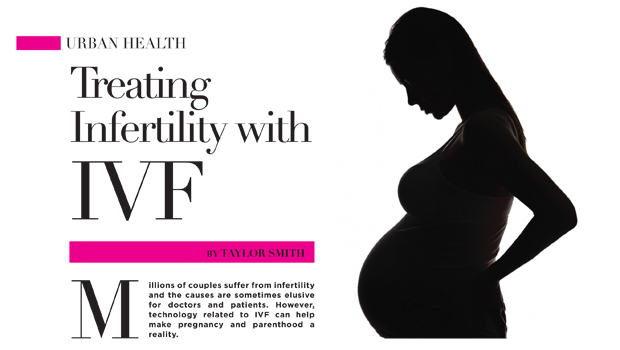Treating Infertility with IVF

By Taylor Smith
Millions of couples suffer from infertility and the causes are sometimes elusive for doctors and patients. However, technology related to IVF can help make pregnancy and parenthood a reality.
WHAT IS IVF?
IVF is a procedure that involves obtaining healthy eggs from a woman’s ovary and fertilizing them with healthy, active sperm either from her partner or from a donor, so that fertilization is achieved outside of the body. It takes around 24 to 72 hours to establish that the embryo is growing. A few days later, the patient will return to the office for the embryo transfer. At this time, a long, thin catheter containing the embryo is passed into the uterus where the embryo is placed. Patients are heavily monitored after the embryo transfer. Regular blood tests and follow-up appointments will be used to monitor hormone levels and overall health throughout the process. According to Dr. Debbra Keegan of the Institute for Reproductive Medicine and Science at Saint Barnabas (IRMS) in East Windsor, NJ, “We’ll know whether the patient is pregnant within two weeks of the egg retrieval.”
WHAT TREATMENTS OCCUR BEFORE IVF?
A thorough evaluation process occurs before any sort of medically assisted fertility treatment. “These tests help to determine the potential of a couple to conceive,” states Dr. Keegan. The evaluation typically involves semen analysis, imaging of the uterus and fallopian tubes, tests of ovarian reserve, pelvic ultrasound, analysis of ovulation and reproductive hormone levels.
There is also an elective option for pre-implantation genetic diagnosis. PGD is available for couples concerned about passing on known genetic conditions to their child or simply for determining whether or not the embryo has a normal number of chromosomes.
WHAT CIRCUMSTANCES BEYOND AGE CONTRIBUTE TO INFERTILITY?
A woman’s chronological age is reflected in the health and quality of her eggs. Other factors beyond age include abnormal sperm count, abnormal sperm shape and mobility, endometriosis (growth of endometrial cells outside of the uterus), anovulation (irregular or absent ovulation), polycystic ovarian syndrome (an endocrine disorder that affects menstruation), and fallopian tube damage or blockage. Lifestyle choices pertaining to weight and poor nutrition may also play a role.
WHAT CAN YOU DO IN CONJUNCTION WITH TRADITIONAL FERTILITY TREATMENTS TO EASE THE STRESS ASSOCIATED WITH INFERTILITY?
Undergoing fertility treatments can cause a great deal of stress for a couple. The following treatments may help to ease the stress and anxiety associated with infertility.
Yoga is incredibly popular amongst health conscious men and women for a variety of reasons. In general, yoga has been shown to improve muscular-skeletal alignment, reduce chronic pain, improve mood and energy levels, and reverse mental stress. For the biggest boost from your yoga class, choose something restorative with a focus on meditation. Practices like Hatha or Anusara consist of gentle asanas (yoga poses) that will glide your body from one movement to the next. Classes typically include guided breathing to reduce tension and stress.
Some health issues can be traced back to poor circulation. Deep tissue massage is a great way to increase blood flow throughout the body, to clear-out toxins, and to calm the mind.
Acupuncture is minimally invasive and has been shown to combat high stress levels, poor circulation, and muscular pain. The science of acupuncture is based on an ancient Chinese understanding of “qi” or energy circuits that run throughout the body. Acupuncturists come with recognized standards and must be licensed to practice in the U.S. You can find a certified practitioner at www.nccaom.org.
Dr. Keegan advises that, “In general, lifestyle modifications that reduce stress and promote overall health can improve a patient’s fertility status.”

